The zorongo was an American black dance, very successful in theaters, dance schools, celebrations and evenings during the romantic era that has fallen into disuse. However, Gypsies began to cultivate it at the beginning of the 20th century., so that it has become a typical style in the repertoire of many dancers and guitarists.. It is performed in modal tones with a free first part and a chorus assigned to the bulería times..
Learn Flamenco
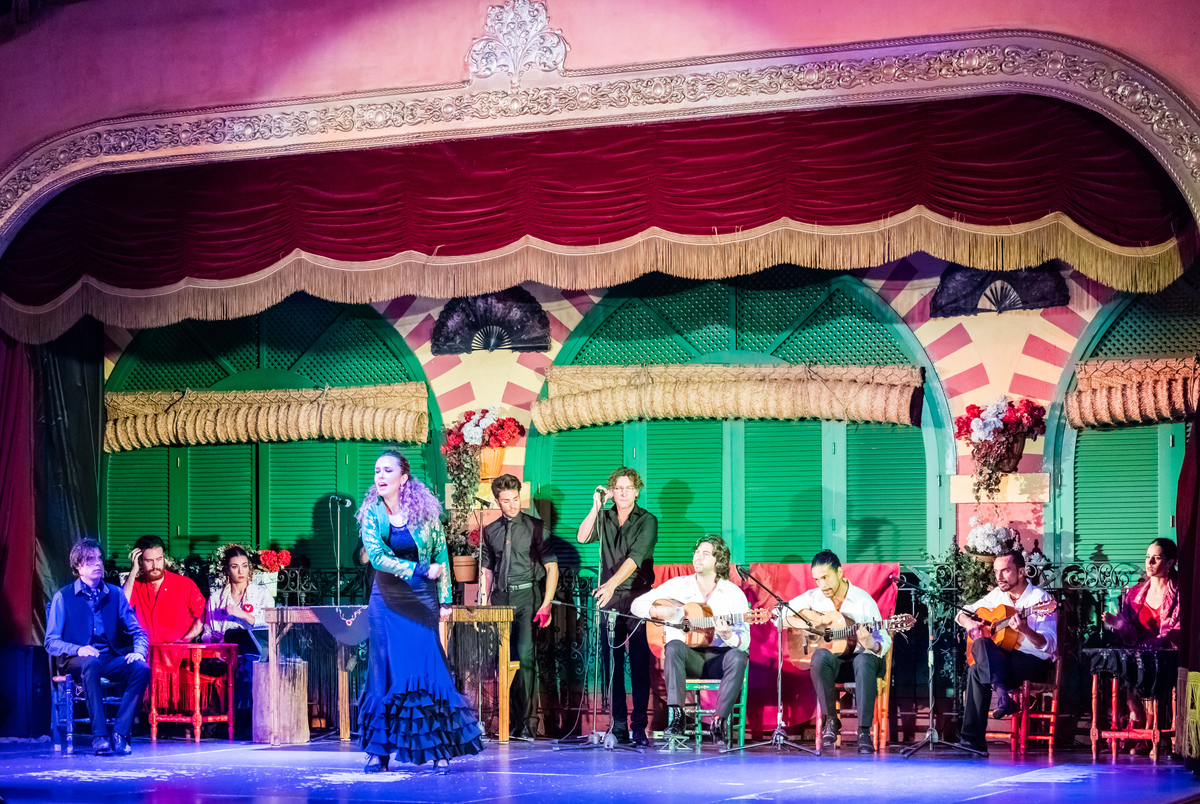
Flamenco Palos
Immerse yourself in the richness and diversity of flamenco through the different styles, each with its own character and style. From the fandango, with its happy and contagious rhythm that invites movement and celebration, even the bulerías, with its vibrant energy and its improvisations full of passion and vitality, Flamenco offers a range of emotions and expressions that captivate the hearts of those who hear and witness it..
In this vast universe of artistic expression, each person finds their personal connection with a particular suit, the one that resonates most deeply with your own experience and sensitivity. Let yourself be carried away by the passionate rhythm and emotionality of flamenco, and find here the stick that most touches your heart.
I'm sorry
Zarabanda
This is another abandolao song that was recorded for the first time by El Niño del Genil in 1911, although the Pearl Blonde stood out in her interpretation. It is another almost obsolete style..
zapateados
It is a song that cannot be sung. Nowadays we only dance and play. It is a kind of mix between the melodic scheme of the alegrías and the rhythmic scheme of the tanguillos..
Puente Genil Drone
It is a style of fandango abandolao from an ancient folkloric modality of the area., from which it takes its name. It has been a song widely spread in recent times by Fosforito.
Zambra
The name Zambra was formerly called both the place where they took place and the shows at Sacromonte.. What remains of it today is a dance made up of three others.: the dawn, the cap and the fly, that symbolize different moments of a gypsy wedding. It is accompanied by monotonous singing and playing, which shows that it is a stick with an evident folkloric root. In recent times Manolo Caracol made famous a very personal style which he called zambra, but that has nothing to do with this one. Some of the most popular titles of the caracolera version are “The savior” and “The Fire Girl”.
Vidalita
Song of the so-called round trip that bears a great resemblance to the milonga to the point where some experts do not make distinctions between the two.. Its creation is attributed to Niño Escacena, that varied certain melodic nuances of the milonga during the time of flamenco opera.
Verdiales
Its name comes from Los Verdiales, an olive region in Malaga where the verdial olive is grown. It is a couplet of five octosyllabic verses that usually repeats the first of them in third place and sometimes four verses with repetition of the first in third place and the last twice.. It is the prototype of the peasant fandango, with simple and happy letters, with monotonous rhythm that reveals its primitive origin. It is usually interpreted in calls “pandas”, where in addition to guitars there are lutes, bandurrias, tambourines, castanets. It is a dance song of Moorish descent that has not finished becoming flamenco to date., clearly maintaining all its folkloric roots.
Trill
Country singing from Andalusian folklore, that was done during threshing work in the Andalusian farms to the sound of the mules' bells. There are those who think that it is not an exclusively Andalusian song., although its similarity with the toná could contradict this theory. They are widespread throughout the Jerez area and one of their greatest interpreters was Bernardo el de los Lobitos. Currently Fernando de la Morena frequently includes it in his repertoire..
Tonás
Sing with couplets of four eight-syllable verses, the second and the fourth with assonant rhyme, which is usually finished with an imperfect tercet. For almost all experts it is the mother song of flamenco, all the others start from him. Its origin is uncertain, although it could have its antecedent in the gypsy romances or corridos that El Planeta performed., Uncle Rivas. His birth could be dated around 1770 both in Jerez and Triana. It is a song without musical accompaniment that generically encompasses the martinetes., deblas and jailers. Many tonás have gone down in history with their own name thanks, above all, to the writings of Ricardo Molina and Antonio Mairena, that do not conform too much to the rigor. Even so, They talk about light toná by Tío Luis de la Juliana, tona of Christ, tona of the birds, toná of Uncle Luis the Captive, toná de Blas Barca, Tío Rivas toná, toná del Cuadrillero, light toná by Curro Pabla, light tona by Juan el Cagón, light toná by Tía Sarvaora, toná from La Junquera, tona de Juanelo, toná by Perico Frascola.
Tientos
Sing with a couplet of three or four eight-syllable verses that belongs to the tango family, of whoever takes the beat although at a slow pace. It is recently created, probably from the beginning of the 20th century. His first great interpreter was Diego el Marrurro, although there are also references to a great Jerez fan called Pepe el Gallo. However, The great diffuser of this style is Antonio Chacón and not, as has been written on many occasions, Manuel Torre. Currently it is a very popular style that almost all singers perform..
Temporary
Country singing from Andalusian folklore, that was done during the harvesting season in the Andalusian lands. It is believed that it is not an exclusively Andalusian song., although its similarity with the toná contradicts this theory. It is a song typical of the province of Cordoba and bears great resemblance to trillera, the arriera and the olive grove.
Taranto
Sing similar to taranta, that differs from her in her need to keep to the beat. Contrary to what one might think, was born after the aforementioned taranta in the lands of Almería and then spread to other places. Among his parents, Rojo the Alpargatero and Chilares are always placed, who could have adapted the old taranta to turn it into a dance style, Although the dance of this name is attributed to the Catalan Carmen Amaya back in the years 40.
Breeding
Sing with a copla of four or five eight-syllable verses, that when singing it one of them repeats. It belongs to the group of Levante songs and within it, to the so-called songs of the Mines. Its origin is attributed to Antonio Graus Mora, “Red the Espadrille Maker”, that would probably rely on some Almerian fandango. It is interpreted freely in terms of the measure of its thirds and is accompanied by the guitar in F sharp. After his birth in Almería, This song spread to other areas, such as Linares and other mining towns in Jaén and the province of Murcia, especially The Union. It is the trunk from which the rest of the mining songs come.
Tanguillos
Sing with copla that admits any meter. He is genuinely Cadiz, which is why it is also known as tanguillo de Cádiz. His lyrics are almost always festive, humorous and inconsequential and is usually interpreted a lot at carnival. Your time, faster than tango, he is related to this one in relation to flamenco, where Pericón and Chano Lobato have stood out in their execution.
Tangos
Sing with a copla of three or four eight-syllable verses. Considered one of the basic styles of flamenco, tango has various modalities, among which those of Cádiz stand out, Triana, Jerez and Malaga. All theories suggest that the cradle of tango must be shared between Cádiz and Seville, ruling out any relationship with Argentine tango. It is possible that they came from old dance songs from the 19th century and that little by little they were configured into what we know as such today., a song performed 4/4 in all possible shades. For example, those of Titi de Triana are done in minor keys, those from Cádiz accompany each other in modal tones, and those of Málaga or Piyayo in major keys. There is also a modality in Granada that is done from above at a slower pace. His first known performers were El Mellizo and Aurelio Sellés in Cádiz., Pastora Pavón and Titi in Seville, Frijones and the Mojama in Jerez, and La Pirula, Repompa and Piyayo in Malaga.
Solea
Sing with a couple of three or four octosyllable verses with consonant or asonant rhyme. Its origin may be in the 19th century, as a song that accompanied a dance called jaleo. However, little by little it became a song with its own entity. The first reference that we have of this style is that of the Andonda, cantaora from Triana who has gone down in history for this task. From this it is deduced that soleá is a song of Triana origin.. However, its expansion is rapid. A gypsy named Paula leaves with her entire family to Alcalá de Guadaira, founding there the saga of the Fatties. All these people brought soleá singing from Triana, but in the land of the Virgen del Águila he amassed a new native style that lasts to this day and of which its greatest representative, according to Antonio Mairena, It's Joaquín from Paula, although it is obligatory to also talk about Juan Talega and Manolito de María. In a similar way soleá also arrives in Jerez, where Antonio Frijones creates another style of his own, and to Cadiz, where the wealth of the sun would force us to mention countless artists, among which the Mellizo stands out, Paquirri el Guanté and Curro Durse. A separate case is that of Utrera. A woman from Jerez named Mercé la Serneta arrives to this very gypsy town in Seville to marry the father of the Álvarez Quintero family for the second time.. There this gypsy develops her soleá singing and Rosario la del Colorao and the Perrate take their reference from her., that end up creating style in the town. It is the same procedure as that of Lebrija, where Juaniquín from Jerez arrives with another very notable modality. Other towns with their own soleá are Marchena: that of Aunt Gilica- and Córdoba: Onofre, which takes reference from the Triana style of Ramón el Ollero-. It is one of the richest styles of flamenco today., It is played in ¾ and can be accompanied by the guitar in modal tones both above and in the middle..
Sevillians
Cante structured in a copla similar to the classic Castilian seguidilla, that is to say, the one formed by four or seven verses of which in both cases are heptasyllables and free the first and the third and pentasyllables and assonants the other two. The Sevillanas, They are the archetype of the folk song and always had the purpose of accompanying dance. It is made up of four couplets, each of which has a different choreography. Within the Sevillanas there are classifications: bowling alleys, pens, biblical, sailors, sprinklers, liturgical, of fair, to listen… La Niña de los Peines has interesting recordings about ancient styles, while the Toronjo Brothers and the Reyes Brothers can be considered the promoters of this style..
Serranas
Serranas singing has not been able to be geographically located by experts yet.. Many think it comes from Córdoba, but this is nothing more than a hypothesis. It is a couplet of four rhyming verses., the first and third heptasyllables and the second and fourth pentasyllables. It is absolutely related to the seguiriya, since it follows the same rhythmic structure, although the guitar accompaniment is done on top, in my tone, instead of through. It is known that one of its first interpreters was Silverio Franconetti and, posteriorly, the Owl, Tenazas and Antonio Rengel from Huelva. His lyrics often refer to banditry., hence the name serrana, That is why it is not surprising that this song was already done in the 19th century.. Its structure is very rigid, since it begins with a light temper, the entire mountain range itself is executed and, finally, is finished in various ways: the most widespread is María Borrico's seguiriya, but it is also done with Pepe de la Matrona's macho or even with a cante abandolao.
Followiyas
Song usually composed of four verses, the first two and the last hexasyllables and the third hendecasyllable divided into hemistichs of five and six syllables. There are also three verses. Its origin, although uncertain, It must be dated to the very genesis of flamenco, because there is evidence that it was sung as early as the 18th century, although, undoubtedly, That original seguiriya that we are told about in numerous writings would have little to do with the one we know today.. It is par excellence the cante de la pena and presents a very extensive stylistic variety.. The accentuation of its beat has led many to confusion, thinking that it was an amalgam compass. It is actually a 12/8 in which silences play an important role. It is always accompanied by means of modal tones, although certain personal styles present slight support in major chords, These thirds being known as “finished”, due to its similarity with the cabal. Its main creation center is Jerez de la Frontera, Where are Paco la Luz from?, Manuel Molina, Crazy Mateo, Maria Borrico, Juanichi the Manager or Joaquin Lacherna. However, It is also legal to place this song in Cádiz: the Twin, Henry the Fat, Durse Job- and Seville: Caganchos, Pelaos, Colorao bottle-.
Arrows
This song is performed throughout Andalusia during the Holy Week processions.. It is not really a solid independent style, but, using a lyric alluding to the passion of Christ, a song by the tonás group is performed: seguiriya, hammer, trunks, jailer- and is decorated with a greater number of melismas, although the main outline of the melody remains intact. The word saeta comes from the first songs made by the brothers of Mortal Sin and those of Aurora back in the 18th century., but as a popular song it was born around 1840, highlighting the old Cordoba, the Puente Genil barracks or the Samaritan of Castro del Río. It could have been Enrique el Mellizo who sang for the first time before a processional image in the Cádiz neighborhood of Santa María, but there is no written record of this. What is certain is that a few years later the saeta would reach its splendor in the voices of El Gloria, Manuel Centeno, Manuel Torre, The Girl with the Combs, Manuel Vallejo and, above all, the Alfalfa Girl.
Hubs
Song of folkloric origin with a couplet of four verses, generally hexasyllabic.. It is of Latin American origin and became popular in Andalusia during the time of variety shows., moment in which flamenco singers adapt it to the times of tango. One of the first to record the rumba was La Niña de los Peines. Subsequently, two other schools of this suit have emerged., one in Catalonia: Catalan rumba- and another in Madrid: Broken Spout-. Pescaílla and Peret are the main representatives of this style in Barcelona, while Manzanita is the best-known rumbero in the capital of Spain.
Rosas
Sing with a copla of four eight-syllable verses with assonte rhyme in the pairs. It belongs to the cantiñas family and may have been born in Sanlúcar de Barrameda. It is a song with a chorus very similar to the alegrías that is currently almost out of use.. Fosforito recorded it on several occasions.
Rondeñas
Its name comes from, it is not known if it comes from the city of Ronda or from “go around”. Couplet of four octosyllabic verses generally with consonant rhyme, which become five per repetition of the second. It is a very old fandango abandolao with a very marked melody that is used on many occasions to finish off the malagueña.. A distinction can be made between large and small rondeña, Well, there are two styles that have nothing to do with each other., although both follow the same metric structure.
Romeras
Sing with a copla of four eight-syllable verses, almost always with assonant rhyme in the pairs. It is a cantiña for dancing that had its origin in Sanlúcar de Barrameda at the hands of Romero el Tito. It is danced in a similar way to the alegrías, because it has the same time signature, but it differs from them in the melody.
Romance
See gypsy corrido/ In recent times Antonio Mairena called romances to some bulerías al-cocha songs accompanied by the guitar on top that always followed the same melodic structure and that, according to the aforementioned singer, formerly performed by the Mellizos and Chiclanita, among others.
Rose
Song of gypsy origin in which a group of men and women arranged in a wheel celebrate a ritual with religious resonances. The wheel is set in motion following the rhythm of the tambourines and the singing. It is eminently folkloric, very related to the zambra.
Praviana
Flamenco singing with non-Andalusian origin, specifically Asturian, which is structured around a stanza of six octosyllabic verses and consonant rhyme in the first two (They are usually repeated), and in the third and fourth (also repeated), which in turn rhyme in assonant with the sixth. The fifth is free. Due to its aforementioned origin, it is not possible to say that the Praviana is a palo jondo in all its essence.. Some flamencologists have related it to Gabriel Macandé's old candy proclamations., but this has not been proven. The truth is that the few flamenco artists who have recorded it mark a clear difference with northern singing., adding a more ornate melodic line than that of the folk style, with the exception of Manuel Tejuela from Leon. Is the case, For example, from Cojo Luque, The Owl, María la Talegona and, above all, the Child of the Rose Fina de Casares, of whom the best version is preserved.
Polo
Sing with lyrics of four eight-syllable verses, that rhyme the second and the fourth It presents numerous musical affinities with the cane and emerged as a flamenco style at the beginning of the 19th century, although there were also previously danceable folk songs with the accompaniment of vihuelas under the name polo., tambourines and lutes. Its invention is attributed to Tobalo from Ronda., although many experts do not agree at all with this premise. Currently it is a not very common song, which begins with a “he's going” which serves as a temper and is usually finished with the so-called soleá apolá de Triana, because polo belongs to the solearera family. It is a song that is somewhat freer than the cane in terms of the singer's improvisation possibilities., but it has a very marked ¾ beat. Among the first cantaores that literature cites as great masters of this style are Tobalo, The planet, The Fillo, Durse Job, Antonio Chacon, Pepe the Matrona, Antonio Mairena and Fosforito.
to Piñana
It does not have much importance as an autonomous stick, Well, it is nothing more than a version of taranta created by Antonio Piñana from Murcia., that has only been practiced by him.
petenera
Sing with a couplet of four eight-syllable verses that when sung generally become six by repetition of one of them and the addition of another unrelated to the couplet.. It is one of the most curious styles of flamenco.. Its history is uncertain, although there is consensus that her name comes from a singer born in Paterna de Rivera (Cadiz), known as La Petenera. It is attached to a certain superstition, since his first lyrics were about burials and funerals, and the majority of gypsies still do not accept it. It is a very ancient song, even coming from the so-called mourners, but its flamenco development did not occur until the end of the 19th century., when Medina the Elder created what is now called girl petenera. Posteriorly, The Girl of the Combs created a more ornate and difficult version that is known today as large petenera. It is accompanied from above and its beat is relatively free, because in some parts it is subject to a 6/8.
Pineapple
It is a song that does not adjust to any specific beat., but it usually borrows well the structure of the tona, well even the bulería por soleá. It was used to put children to sleep.
Murcia
Sing with a copla of four or five eight-syllable verses that belongs to the Levante group. Its origin is not clear because the discography is so confusing that it has classified diametrically opposed songs as Murcian.. Although it is a style from the Cartagena area, has an important reflection in Almería, where José Sorroche interprets it with mastery.
Mirabras
Cante of Cádiz origin with a couplet of four irregular verses. It is a cantiña that was probably born in Sanlúcar de Barrameda. It requires great skills from the artist because there are important changes in tone and octave and he has to stick closely to the beat as it is a danceable style.. Their lyrics usually remind us of the tasks of street vendors and markets.. It is attributed to an ancient singer called Tío José el Granaíno, also known as Sanlúcar.
Mining
Sing with a copla of four or five eight-syllable verses that belongs to the Levante group, and within this, to the styles of the mines. It is a very notable type of taranta that was generated in the Murcia mountain range of La Unión., although its creator was the Almerian El Rojo el Alpargatero, who bequeathed it to his son so that it would be perpetuated in history. In reality there are hardly any differences with the taranta, except for certain very prominent melodic nuances. Its main performers are Pencho Cros, Antonio Piñana, Encarnacion Fernandez, Fosforito and José Sorroche.
Milonga
According to most experts, This song comes from Argentine folklore, specifically a song from the Río de la Plata, so it's a back and forth style. It entered Andalusia through the port of Cádiz. Apparently, Josefa Diaz, daughter of the bullfighter Paco Oro, She was hired by Juan Junquera from Jerez to tour Argentina.. Upon her return, Pepa Oro had adapted the milonga, offering it as the main number in her repertoire.. It usually has a tanguillo rhythm and is performed in minor keys.. Pepe Marchena was also one of its main architects.
Media Granaína
Sing with a copla of five octosyllabic verses that generally rhyme in the first consonant, third and fifth, and which when sung are sometimes converted into six by repetition of one of the first two. It is exactly the same as granaine, except that the thirds are more linked and require greater difficulty of interpretation, especially in the finishing, which is more elongated.
jackhammer
It probably has its origin in forges or blacksmiths.. Sing with a copla of four octosyllabic verses that is considered a modality of the toná, like the jailer or the debla, differentiating from them both by the lyrics and by a certain type of melody that always ends in major keys.. It is usually a sad style and does not have guitar accompaniment, as happens with the entire group of tonás, although in this case it is usually supported by the percussion of a mallet on an anvil.
Marianas
It is a song from the tango group but slower, like the tientos, what, according to several flamencologists, It comes from some gypsies who were singing to a goat named Mariana. It is accompanied from above and one of its first interpreters was Bernardo de los Lobitos. Currently, a lyric by Francisco Moreno Galván that Miguel Vargas performed in public for the first time is widely performed..
Malagueña
Sing with a couple of four or five octosyllable verses with cross rhyme assonant or consignant, which generally become six by repetition of the first or third. Basic trunk of Levante songs and from the old Malaga fandangos. It became a flamenco style in the first half of the 19th century.. It is not a song to dance to and it is very rich from a melodic point of view.. There are various types of malagueñas depending on their creators., coming from both the province of Malaga, as others like Cádiz. Enrique El Mellizo must be highlighted in this suit., Antonio Chacon, LaTrini, The Pena, La Peñaranda, Baldomero Pacheco, The Little Person or Gayarrito, among many others. It is accompanied by the guitar on top and it is a song “optional”. On many occasions it is finished with a fandango abandolao.
Lorca
In reality it is not a stick per se., Well, the woman from Lorca supports, in general, in the bulería. What happens is that Federico García Lorca created a series of flamenco songs performed for the first time by Argentinita that have gone down in history as Lorca songs.. They highlight the “Go ahead” o “At Chinitas' cafe”, songs that would later capture La Niña de los Peines and, more recently, Carmen Linares.
Light
Sing with a couplet of four verses, first and third heptasyllables, second and fourth pentasyllables, with rhyme in pairs. It is a seguiriyas song with some nuances that receives its name, in theory, because it is easier to execute than this. It is rarely sung and currently its use has been relegated to the preparation of the mountain range., as an adaptation couplet.
Lavender
Cartagena's own taranta modality that has a drop to minor keys. has been interpreted, above all, by Pencho Cros, Encarnacion Fernandez, Antonio Piñana and Juan Valderrama.
Fuss
It is the bulería that is practiced in Extremadura, with monotonous cadences and danceable rhythm. It has been used by many guitarists for their concerts..
Jaberas
Song with a copla of four octosyllabic verses that belongs to the group of fandangos abandolaos. Its name seems to come from a bean seller who is credited with its creation.: The Jabera. It is a fandango that is accompanied from above and that requires great abilities from the artist who interprets it., because arabesques and melismas dominate in it and there is hardly any room for breathing. It is one of the oldest Malaga styles and its main interpreters are Fosforito, Utrera Work, Chocolate or Carmen Linares, among others.
Ownership
Also known as cante de los marengos. It is an abandolao song typical of the coasts of Malaga, more specifically the marine seines. It is almost out of use.
Guajiras
Guajiro is the Spanish word used to designate the white peasants of Cuba.. It is therefore, a round-trip song from Cuban folklore, with a couplet of ten octosyllabic verses or the tenth. Its lyrics refer above all to Havana and its inhabitants and its rhythm is the same as that of the bulería., although with different accentuation. It is always played on major keys. According to many experts, this song should actually be called Cuban point., Well, it already existed in Cuba with this name. Much of its melodic richness is due to Pepe Marchena.
Grains
Sing with a copla of five octosyllabic verses that generally rhyme in the first consonant, third and fifth, and which when sung are sometimes converted into six by repetition of one of the first two. It is from the group of Levante songs and, like the malagueña, takes its structure from fandango. Most experts attribute its creation to Don Antonio Chacón, who was able to base his composition on the melody of the malagueña and spent a long time in Granada towards 1890. It is sung freely and is accompanied by the guitar in B due to its high tessitura.. Great interpreters of this style have been Manuel Vallejo, Marchena, Enrique Morente or Naranjito de Triana.
Gilianas
Cante related to soleá that emerged after a derivation of the so-called gypsy corridos. It is a romance that tells a uniform and monotonous story, followed by the guitar with the same accompaniment as the soleá. This song is practically lost, although it has recently been recorded by Jesús Heredia.
Garrotin
Gypsy dance of non-Andalusian origin but practiced especially in Seville. Later the song emerges. It is believed to come from Asturias or the ancient kingdom of León, where the 'garrotiadas' were done, and then he passed through Catalonia, where it was absorbed by the gypsies of the area. The dancer Faíco announced it, while in relation to singing we must mention the Niña de los Peines, who made a great version of this style. It has a tango rhythm and the lyrics are usually simple in content..
Guys
Cante created by Juan Peña el Lebrijano that is based on bulería. It has not been welcomed by more singers, so you can hardly talk about it being an autonomous stick. However, yes it is true that it has different nuances.
Farruca
Farruco was the name with which the Andalusians called the Galicians, which is where this song comes from, with a couplet of four octosyllabic verses that rhyme second and fourth. The definitive adaptation to flamenco is attributed to Loli, although his great impulse was Manuel Torre. Nowadays you can hear the farruca on few occasions, except when accompanying the dance, a dance created by Faíco that only men usually perform. It settles in minor tones and follows the beat of the tanguillo.
Fandangos by Lucena and Cabra
It is a type of fandango abandolao typical of these Cordoban towns.. In Lucena there are three different styles: that of Dolores de la Huerta, that of Rafael Rivas, and the one on Rute Street. In addition, in Goat it should be noted that its creator and broadcaster was Cayetano Muriel.
Fandangos from Huelva
Apparently, The Huelva fandango is born in Alosno, and from there it is distributed through the Andévalo, the Sierra and the capital. From there, an infinite number of different styles have been studied., highlighting four leading artists in its execution: Jose Rebollo, Paco Isidro, Antonio Rengel and Paco Toronjo. Among the best known styles are those of Alosno, the shockers, those of Almonaster, those of Santa Eulalia, those of Cerro del Andévalo, those of Encinasola, those of Calañas and those of Cabezas Rubias.
Frasquito Yerbagüena Fandangos
Modality of fandango abandolao created by the Granada native Frasquito Yerbagüena that demands great abilities from the artists due to its high tessitura and its melodic changes. Currently it is widely used to finish off malagueñas singing..
Fandangos
For some theorists, This is the most primitive song that exists. It is structured on a beat of 3/4 and has a great tonal variety. They are couplets of five octosyllabic verses that usually become six by repetition of one of them..
Apparently, The Huelva fandango is born in Alosno, and from there it is distributed through the Andévalo, the Sierra and the capital. From there, an infinite number of different styles have been studied., highlighting four leading artists in its execution: Jose Rebollo, Paco Isidro, Antonio Rengel and Paco Toronjo.
Among the best known styles are those of Alosno, the shockers, those of Almonaster, those of Santa Eulalia, those of Cerro del Andévalo, those of Encinasola, those of Calañas and those of Cabezas Rubias.
Trunks
In caló it means Goddess. Part of the trunk of the toná, so it is a song without guitar. Its melody requires a more abrupt melismatic ornamentation than that of the group's other songs.. There are multiple theories about the origins that explain it.. The oldest of them claims that it is the creation of a singer called Blas Barea., because at the end of the couplets it was always said “unlock the bar”. However, It is believed that this version disappeared and what we know today as debla is a song that Tomás Pavón rescued from the cellar of the gypsies of Triana, something that led him to antagonize other singers of his ethnic group., as Juan Talega.
Gypsy Corrido
Also called run. It is a song without musical accompaniment, like the tonas, from popular Andalusian romances, Therefore, many scholars have classified it as the oldest of the flamenco palos and the father of the aforementioned tonás.. In “The gitanilla” of Cervantes, mention is already made of this style, so according to Blas Vega, “The romances remained in the popular soul throughout the 15th century.”. These consecutive songs and monorhymes are not accepted by the upper class, so that they are scattered among the people of the common people, emerging plebeian romances. In this environment the Romance of Gerineldos arises, that of Ciego la Peña and that of La Princesa Colinda, who could have Moorish ancestry, Well, according to the explanations of Washington Irving, “They are simple rude tunes with few inflections. They sing them loudly with long, pronounced cadences”. They have gone down in history as cultivators of this style El Planeta, Chiclanita, The black: -Romance of the Monja-, The Huts, Pepe de la Matrona and Agujetas the Elder.
Colombian
Song with twists from Latin American folklore created by José Tejada Martín, Pepe Marchena, who, in addition to being its creator, has been its main interpreter. Marchena invented this song together with Hilario Montes based on the Spanish rumba and he did it for the first time in public in the company of the Madrid singer Niño de la Flor.. The couplet is six eight-syllable verses., of which the artist usually repeats the first two as a chorus. In the opinion of José Blas Vega when studying the round trip styles “toward 1930 a new style also appears, the Colombian women, motivated more by a song than by the folkloric influence that may come from Colombia”.
Chuflas
See bulerías. The only difference with these is in the comedy of the letters.
Cartagena
Song of four or five eight-syllable verses that belongs to the Levante group, and within this, to those of the mines. Its origin could be in an old folkloric fandango from Cartagena, although there are also two theories that differ from this last one. The first of them is the one that attributes the song to Concha la Peñaranda, also known as Cartagenera. However, many experts believe that the father of this style is Rojo el Alpargatero, so in this case the singing would be of Almeria origin. Currently there are two types of cartagenera: the classic, that starts from minor tones, and that of Chacón, with a very complex melody.
Prisoners
Song with a copla of four eight-syllable verses rooted in the group of tonás. It has a great resemblance to the martinete until it only differs from it by the letters., that in the case of the jailer always refer to prisons, forced labor, to the condemned.
Snails
Cante whose copla consists of a series of stanzas, with verses of different sizes. It belongs to the group of cantiñas and melodically it is very close to the alegrías and, in some thirds, to the mirabras. Barely leaves room for improvisation, since unlike other cantiñas, in the snails the lyrics tell a long story, so verses cannot be interspersed as the singer occurs to them.. Its etymological origin lies in the fact that this song was probably created by someone to promote snails. José Blas Vega attributes it to Tío José el Granaíno.
Cane
Sing with a copla of four octosyllabic verses that rhyme in the second and fourth. It is a long style related to the soleá that is finished with a macho that is difficult to execute.. It is characterized by the presence of some “ayes” at the end of each song and some theorists consider it as the trunk of many songs. Currently it is a palo that has been summarized in the dance created by Carmen Amaya in the years 30. As for the letters, there is very little variety and the phrase “Arsa and long live Ronda” can give important information about its origin. It is accompanied by the guitar with a soleá beat above.
canteens
Generic name that groups snails together, you will look, pilgrimages and joys. This song is native to Cádiz and the ports of its Bay, although there are also styles, like the Pinini, settled in towns like Utrera and Lebrija. They are generally short couplets and supposedly related to the old jota of Cádiz.. They are performed at the same time as the bulerías or the soleá but melodically they are structured on major tones..
basket baskets
This song is a creation of Camarón de la Isla and Paco de Lucía. Taking the structure of fandangos, The two geniuses from Cádiz made a clearly differentiated version that has not been heard again after the death of the islander.. Nevertheless, in one of the two recordings they made of this song, It is tagged as alboreá.
bell ringers
Sing with a couple of six-stringed verses, being the first, third and fifth decasyllables, and the second and fourth twelve syllables. It is a song of popular origin that was performed during the so-called Rosario de la Aurora. But his transformation into flamenco has a clear moment. The Jerez native Manuel Torre heard that song at a party by Andrés Martínez de León with the Huelva doctor Jesús Centeno. The singer kept the copla and a night at El Fontanal (Sevilla), next to Niño Ricardo, the bullfighter Niño de Palma, Gloria y Rebollo asked the guitarist to put the capo on three and remembering what he had heard at the party, performed the version that is known today as flamenco. Other great performers of this Christmas song were La Niña de la Puebla and Juan Varea.
Cabales
Song by the seguiriya group with couplets of four eight-syllable verses. Its creation is attributed to El Fillo, that he could have named it after a young man paid him so little to do the singing that the artist responded: “I have sung for good reasons and this is not good”. It differs from the seguiriya by its intonation, since it is performed on major tones. The best known styles are those of Silverio and El Pena.
Bulerías
Sing with copla, in general, of three or four eight-syllable verses, of a festive and boisterous nature whose etymological origin could be in the word mockery, and from there “burlery”.
It is dated to the end of the 19th century and is born from the soleá, stick of the one who takes the beat to increase the rhythm. Within this song two variants can be distinguished: bulerías to dance, that present a large multitude of styles, and the bulerías to the blow, created more for listening and also called bulerías por soleá, palo that for some experts is prior to the bulería itself.
Many attribute its creation to Loco Mateo and Gloria, who could well have been the fathers of bulería por soleá, but the great promoters of this song were the Sevillians Manuel Vallejo and La Niña de los Peines.
Nevertheless, bulería has a wide variety of styles, like those of Cádiz : in major tones, those of Jerez : modal tones- or the cuplés : minor tones-, These variants being masterfully interpreted by the Perla de Cádiz, Jerez earthquake and Fernanda de Utrera, respectively.
Ganging
Fandango abandolao type typical of the Sierra de Málaga and one of the oldest known. His name could come from the instrument with which he accompanied himself., the bandolina, or his lyrics referring to bandits.
Bamberas
Also know as “swing song”, for its pronounced melodic swings. It is a song with a couplet of four eight-syllable verses.. Its origin is clearly folkloric and it is one of the clearest examples of flamenco that exist., Well, it was the Girl of the Combs who gave it the shape it currently has.. In reality, Pastora collected several lyrics from these popular songs and gave them flamenco character by adjusting them to the beat of fandangos., and not soleá, as has been written on many occasions. It was Naranjito de Triana and Paco de Lucía who changed the concept of this song and, respecting Pastora's melody, they changed the tempos to those of the soleá por bulerías.. Today this is the time signature to which it is performed and accompanied above, with its ending being in minor tones..
muleteers
Country singing from Andalusian folklore, that was done during threshing work in the Andalusian farms to the sound of the mules' bells. There are those who think that it is not an exclusively Andalusian song., although its similarity with the toná, since it does not have musical accompaniment either, could contradict this theory. They are widespread in the Jerez area and bear a great resemblance to the trillera and the olive tree..
Joys
Cante with copla of four octosyllabic verses that belongs to the group of cantiñas. It was born as a dance song and is made up of a succession of couplets between which the so-called juguetillos are usually interspersed.. It is an eminently Cadiz style, although a very peculiar version is found in Córdoba.. It is related to the old jota of Cádiz. The dance is difficult to perform and is characterized by having very prominent brushes and a calm part called “silence”. In it the traditional “trititrán”, which according to Chano Lobato was invented by Ignacio Espeleta during a party in which he forgot the letters. As great interpreters of this genre, history has left Aurelio Sellés, Pericón de Cádiz, Fosforito, the Pearl or Shrimp.
Alborea
Song of gypsy origin, with a couplet of four hexasyllable verses and a chorus. It is one of the greatest styles kept by this ethnic group, although in recent times, singers like Rafael Romero “The Chicken” and Joselero de Morón have not hesitated to interpret it. The reason for this jealousy of the gypsies is because it is a melody typical of their wedding rites and its most popular lyrics refer to the virginity of the bride.. It is usually adapted to the tempos of the soleá por bulerías. They predominate in Seville and Cádiz, but they also occur throughout Andalusia and some areas of Extremadura.
olive trees
Country singing from Andalusian folklore, What was done during the olive harvest season. It is believed that it is not an exclusively Andalusian song., although its similarity with the toná contradicts this theory. It is a song typical of the province of Jaén and bears great resemblance to the tempera, the thresher and the muleteer.



 Sevilla
Sevilla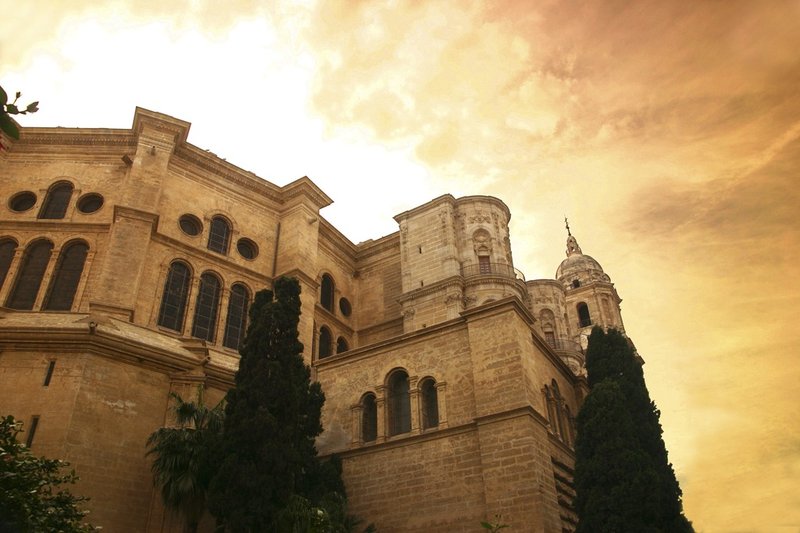 Málaga
Málaga Jaen
Jaen Huelva
Huelva Granada
Granada Córdoba
Córdoba Cadiz
Cadiz Almeria
Almeria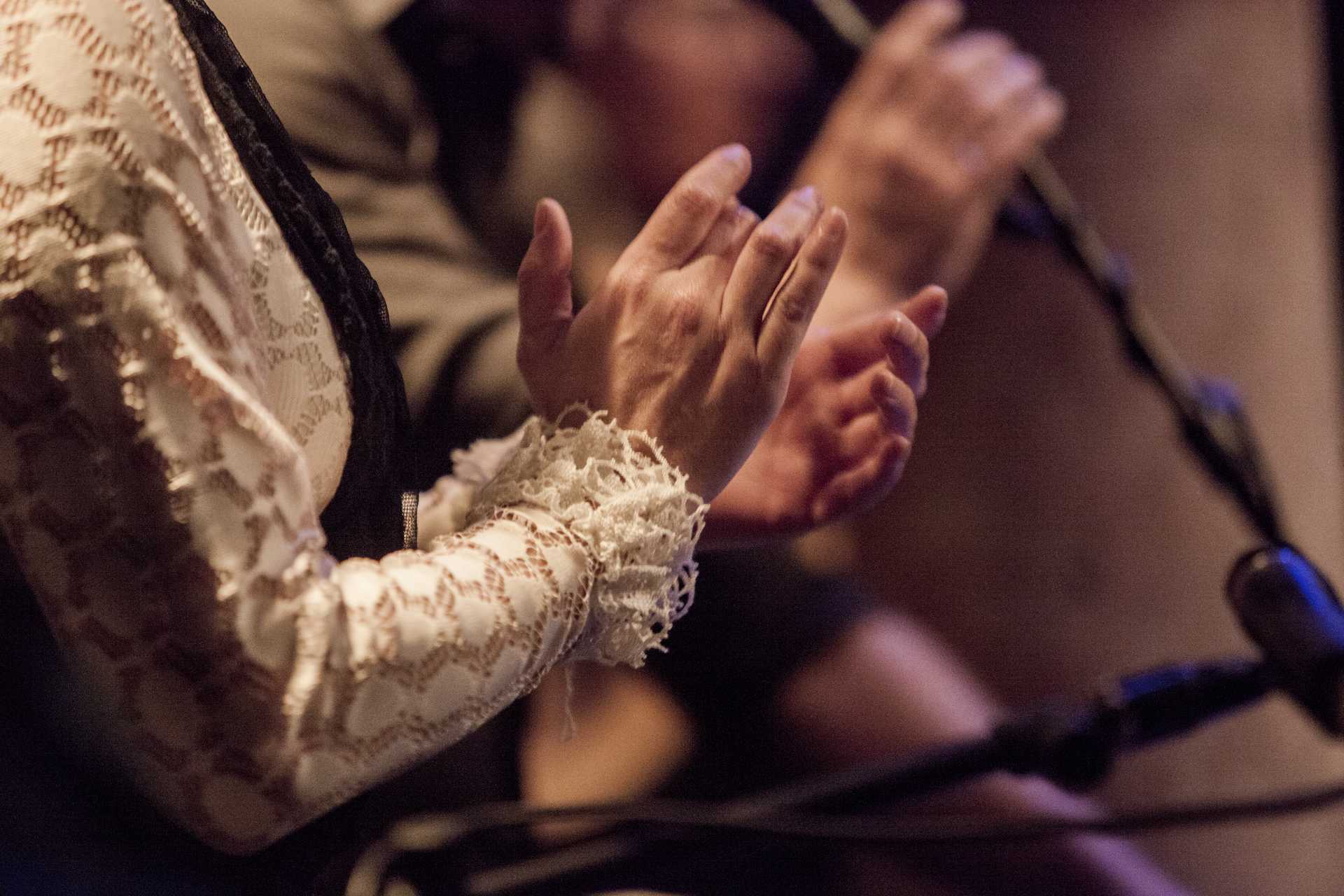 A tourist and cultural vision of flamenco
A tourist and cultural vision of flamenco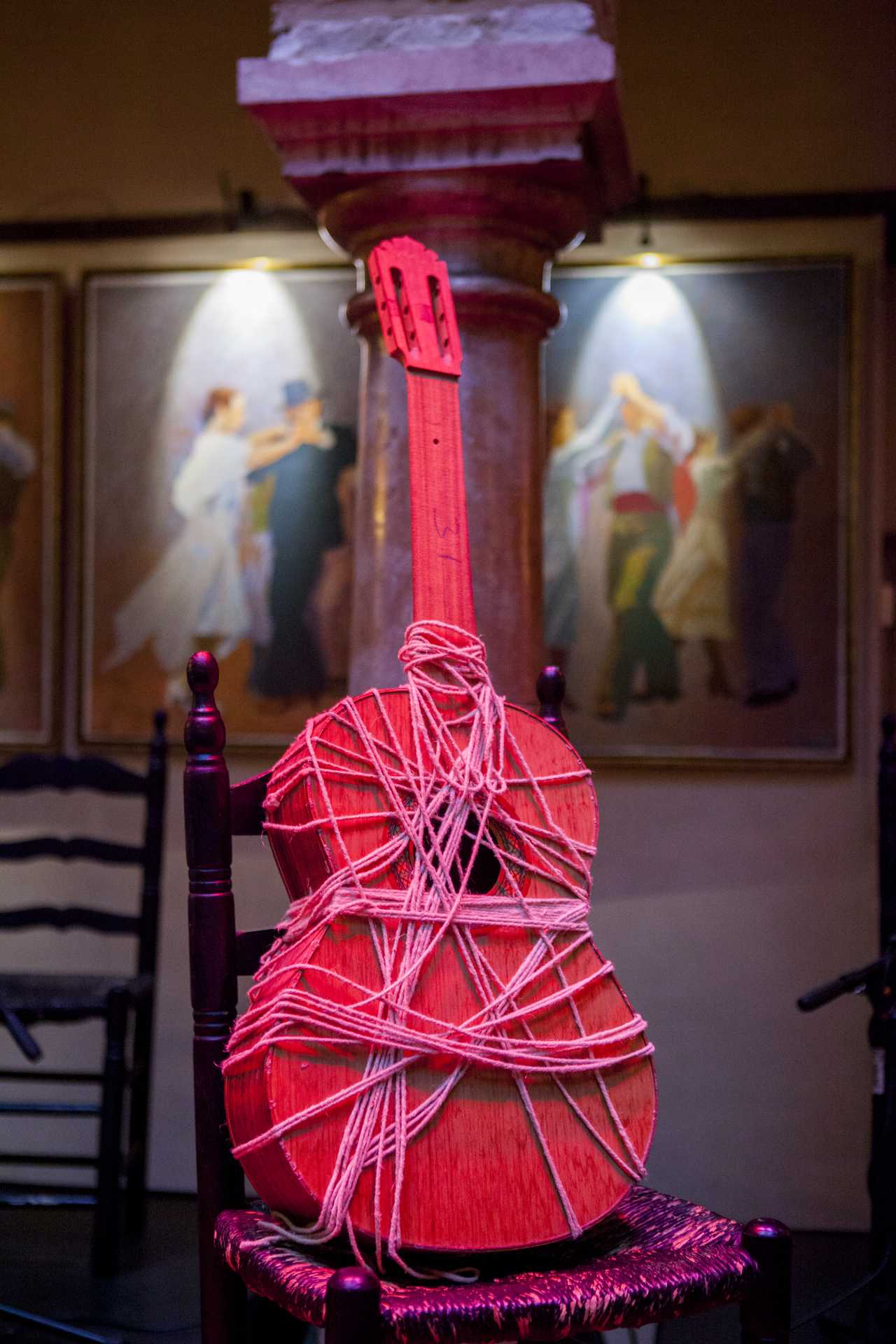 The Guitar, last to join.
The Guitar, last to join. The history of flamenco with respect to its geographical distribution
The history of flamenco with respect to its geographical distribution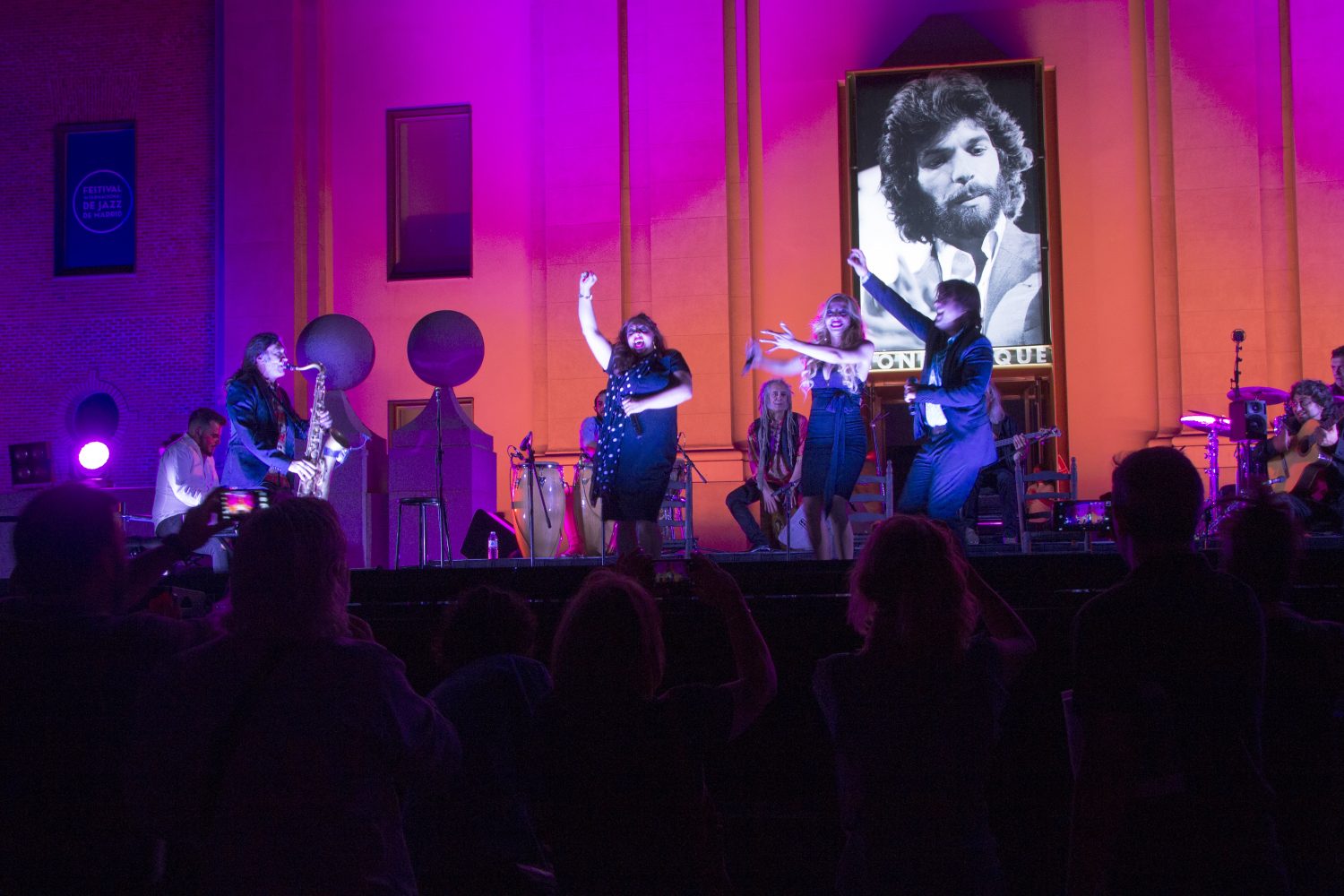 The present and future of the genre. The Fourth Golden Key of Singing.
The present and future of the genre. The Fourth Golden Key of Singing.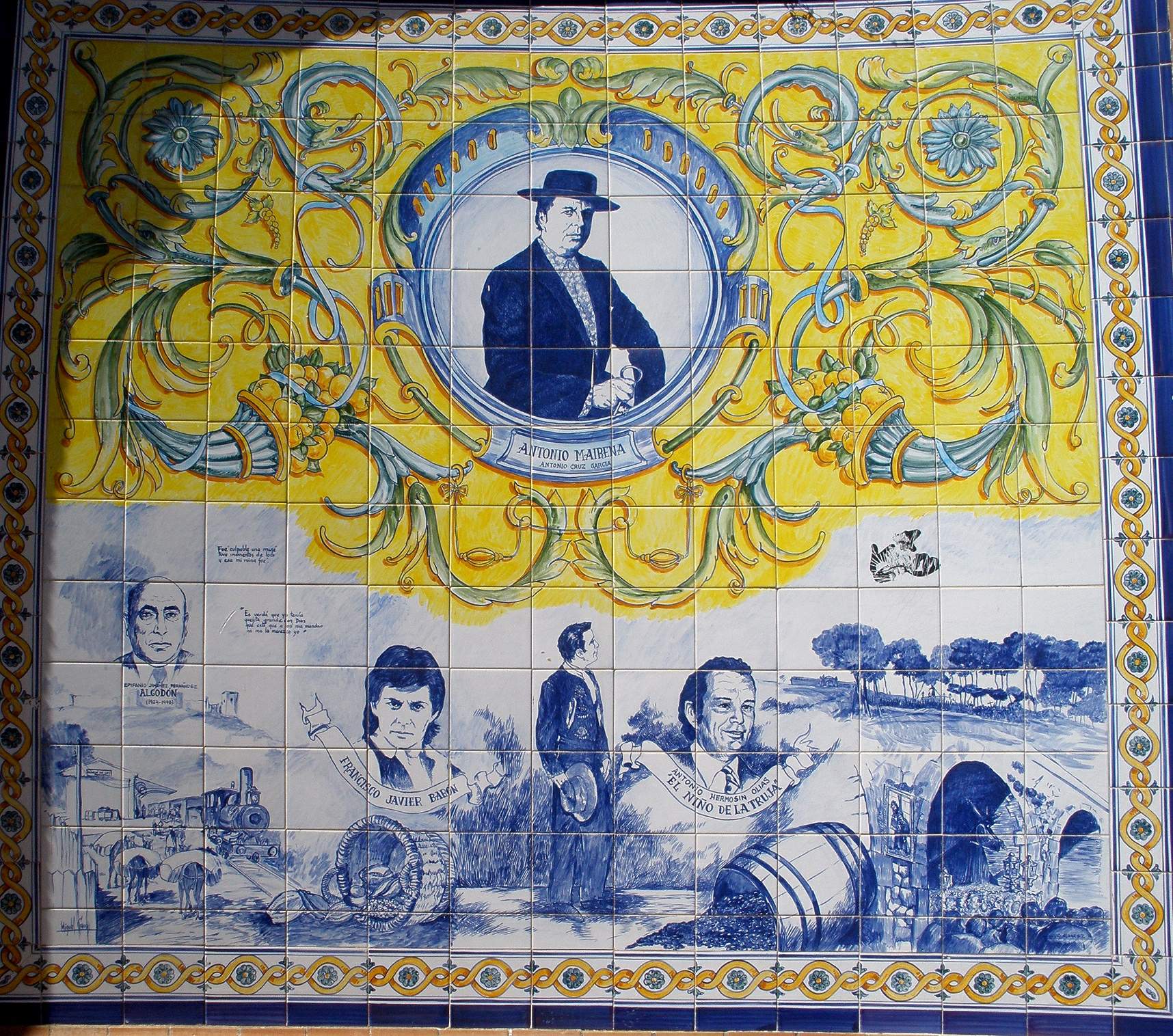 The festivals
The festivals Revaluation of flamenco. Third Golden Key of Singing
Revaluation of flamenco. Third Golden Key of Singing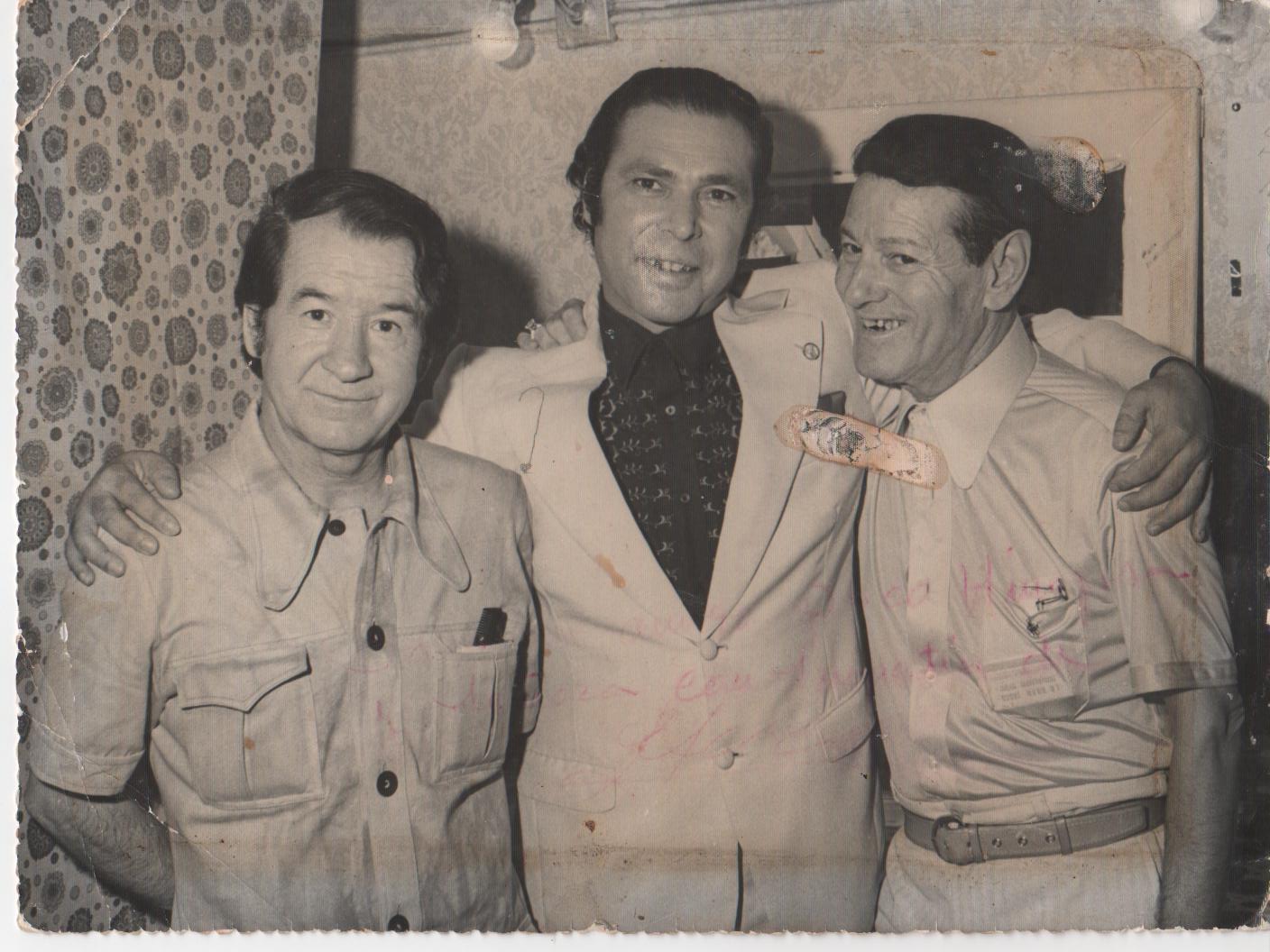 The Flamenco Opera
The Flamenco Opera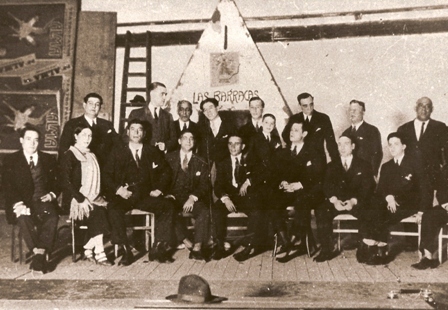 Flamenco in Madrid. The Pavón Cup. Second Golden Key of Singing
Flamenco in Madrid. The Pavón Cup. Second Golden Key of Singing The contest that took place in 1922 in Granada
The contest that took place in 1922 in Granada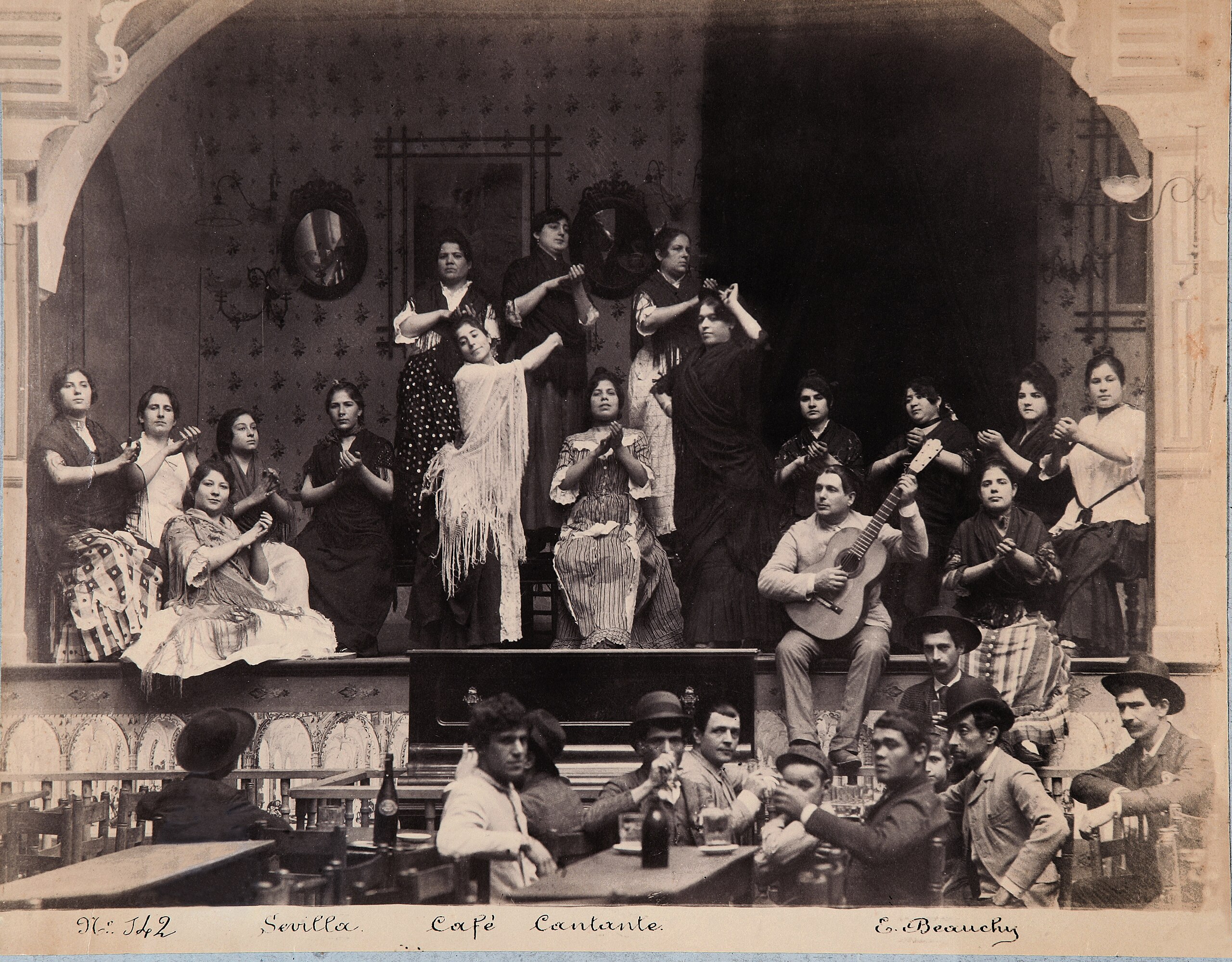 The great creators. The Golden Age. The Singing Cafes
The great creators. The Golden Age. The Singing Cafes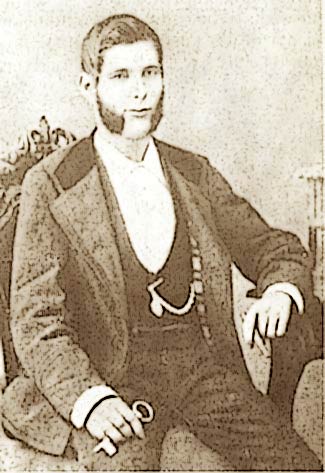 Evolution. Hermetic Stage. First singers
Evolution. Hermetic Stage. First singers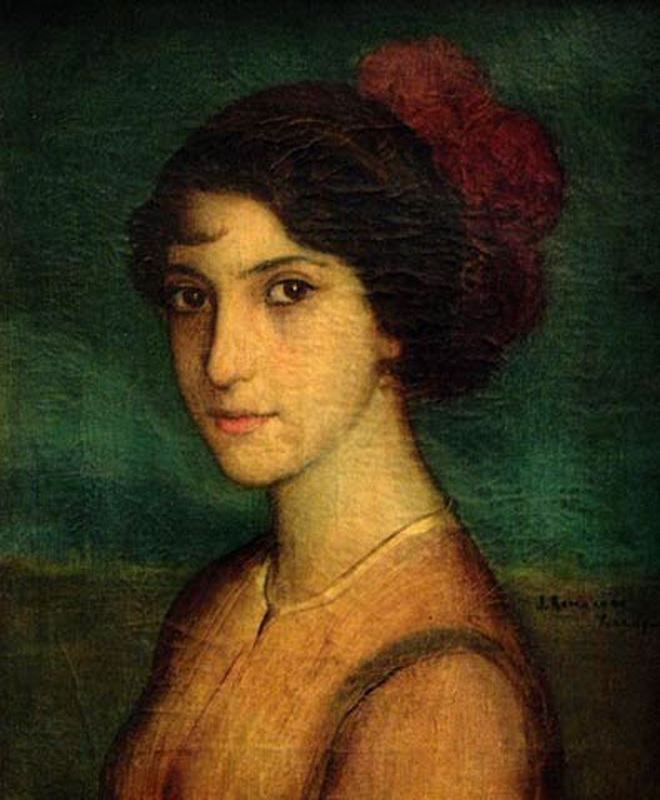 Origin of the word “flamenco”
Origin of the word “flamenco”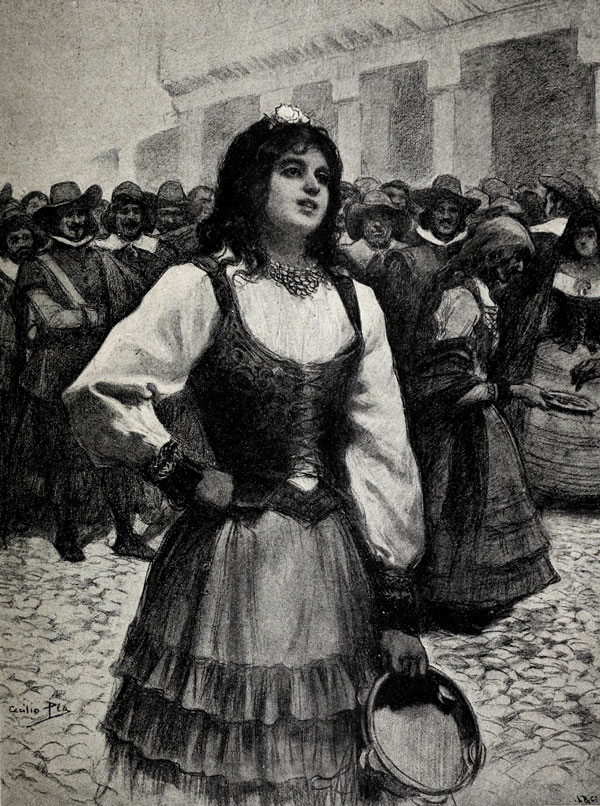 First written references
First written references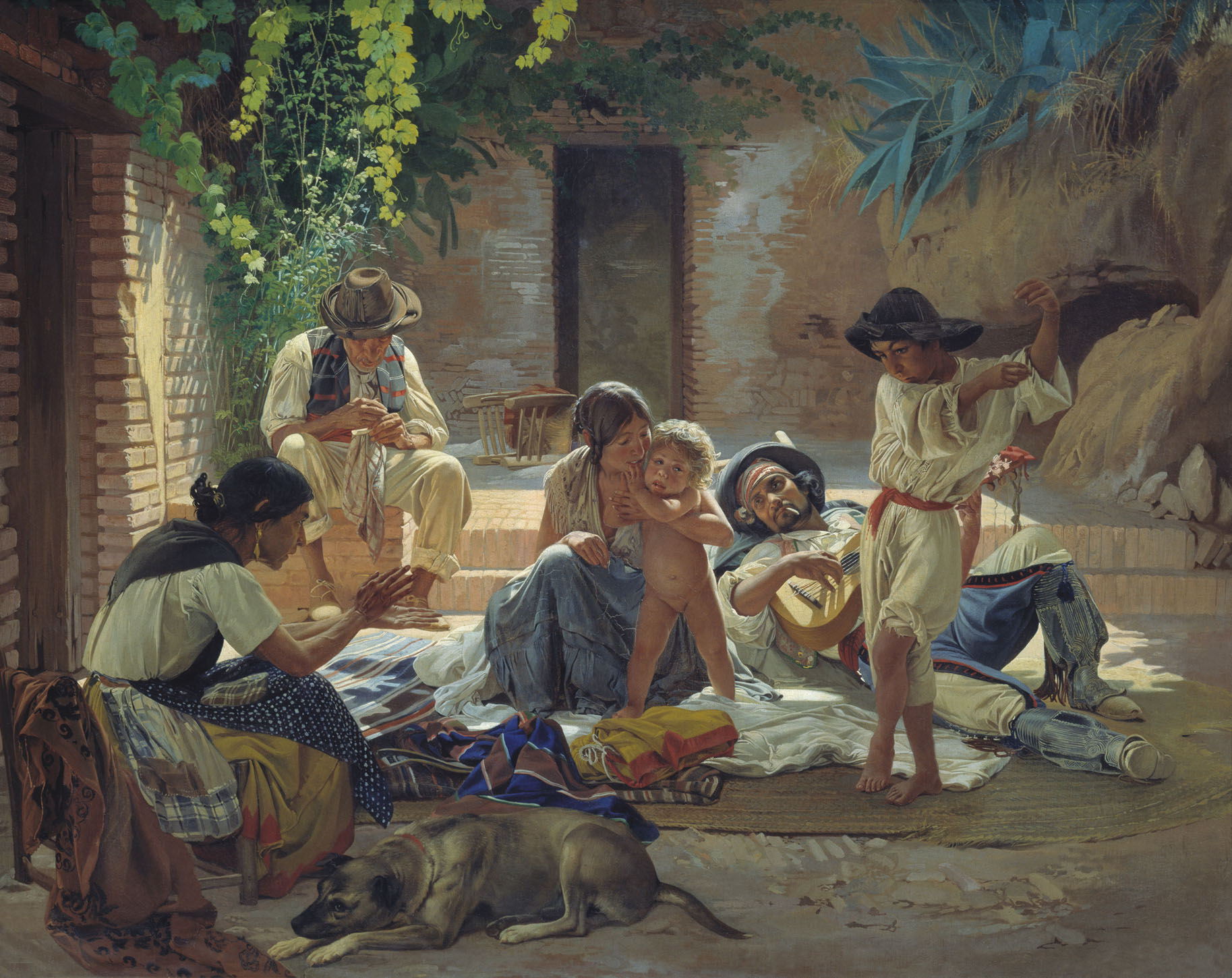 Musical background
Musical background